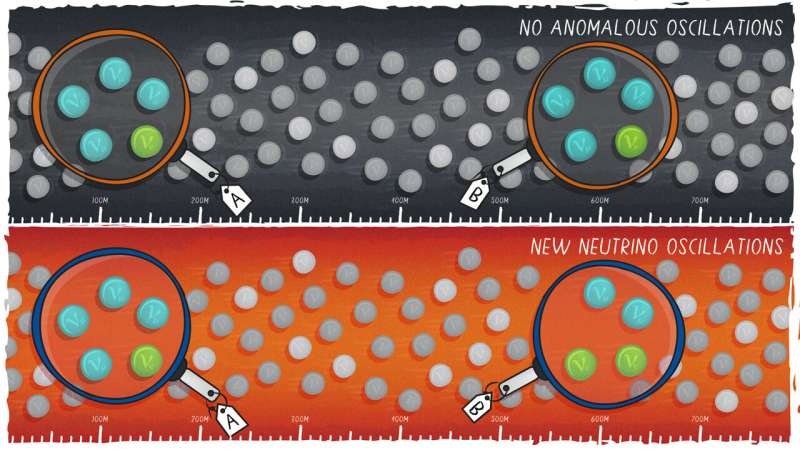Fermilab’s Short-Baseline Near Detector (SBND) has made a significant breakthrough in the world of particle physics, detecting its first neutrino interactions. This milestone marks the beginning of a new era in the quest to unravel the secrets of these elusive particles and potentially uncover new physics beyond the Standard Model.

Looking for the Fourth Neutrino
Particle physics is built on a framework known as the Standard Model, which has stood up to test after test. However, this model is incomplete, and researchers know it. For nearly thirty years, several experiments have detected anomalies which may indicate neutrino oscillations to a fourth type of a possible sterile neutrino.
Unlike the three known neutrinos (electron, muon and tau), its fourth sibling does not feel the weak force which would allow its very infrequent interactions to be mistaken for oscillations. Fermilab also runs the Short Baseline Neutrino Program, which includes both SBND and the ICARUS detector, and is designed around looking for signs of just such a fourth neutrino. With measurements of the neutrinos as they are created and have perhaps oscillated, scientists hope to lift this decades-old veil on particle physicsessentially pulling back the curtain on a previously unseen realm.
Unraveling the Mysteries of Neutrino Interactions
Although the discovery of a fourth neutrino was still SBND’s top goal, it also has an excellent physics program in its own right. Scheduled to be built within sight of the neutrino beam, the detector will see an incredible 7,000 neutrinos interact per day — which is more than any other facility of its kind.
This trove of data will enable scientists to investigate neutrinos interactions for the first time with subatomic accuracy, offering valuable insight into the particles’ physics. Knowing how neutrinos slam into an argon atom’s nucleus — a crucial part of the detector — is especially critical, because future experiments at facilities like the Deep Underground Neutrino Experiment (DUNE) will also use liquid argon to trap neutrinos.
With a unique ability to collect 10 times more data on neutrino-argon interactions than all previous experiments combined, SBND will offer the global scientific community critical insight into these obscure interactions, enabling future groundbreaking discoveries in reputable neutrino physics.
Conclusion
This successfull detection of the first neutrinos at SBND, stands as a key milestone translating the long-term research into understanding these elusive particles. The lessons learned from this momentous accomplishment not only will illuminate the possible existence of a fourth neutrino but also give us an unprecedented view of neutrino interactions, serving as the basis upon which to build future particle physics discoveries. As the SBND collaboration works more with collecting data using the detector and analyzing it, scientists around the world are looking forward to see what new discoveries could be on its way allowing for a better understanding of how everything is built in our universe.
